Museum dinosaur researcher Dr David Button shares his review of the second instalment in the Jurassic World trilogy.
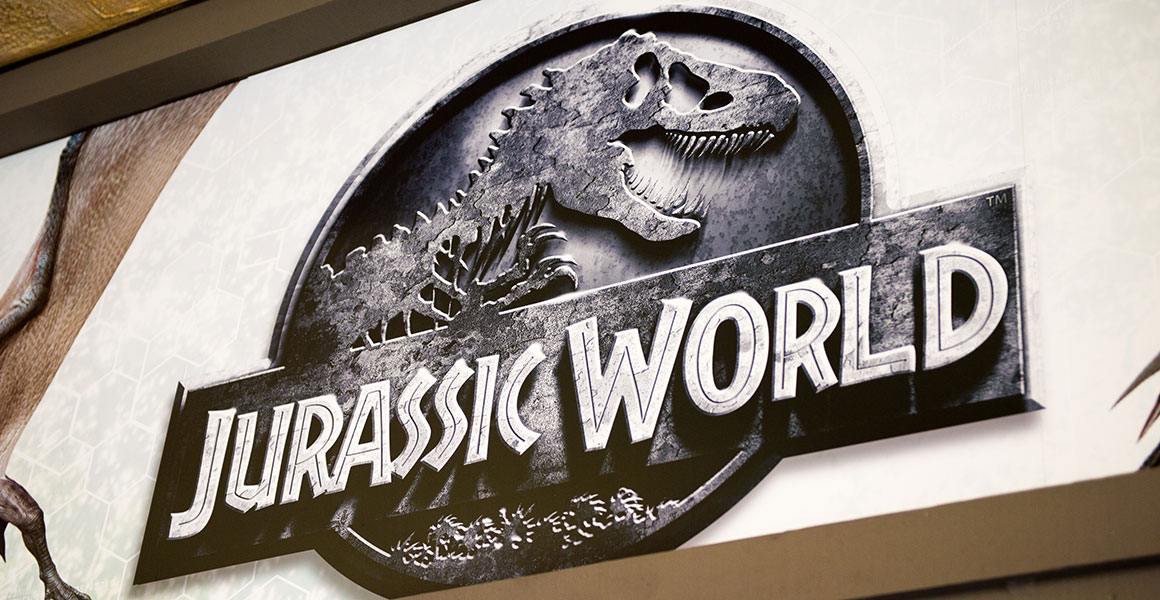
Jurassic World may have many scientific holes, but dinosaur researcher David Button thinks there is still plenty to appreciate. © Anton_Ivanov/ Shutterstock.com
We, once again, find ourselves in a time in which dinosaurs rule the (cinematic) Earth, as Jurassic World: Fallen Kingdom storms the international box office. Given that this is the biggest event these extinct beasts have had in their social calendars for quite some time, it only seems fair to take a look at what there is to see and enjoy this time around.
We all know why we are returning to Jurassic World: the dinosaurs. Thankfully, Fallen Kingdom does not disappoint in this department.
Newer and weirder dinosaurs
There are several new nasties on the prowl, including the carnivorous Allosaurus, Baryonyx and Carnotaurus. Although these three are B-tier dinosaur celebrities who have even appeared heavily in Jurassic Park merchandise over the years, this marks their long-overdue debuts in the movie canon.
More fun for dino fans is present in the appearance of some truly obscure species: the horned dinosaur Sinoceratops enjoys a scene all to itself and we get several shots of the bizarre theropod Concavenator (albeit only as a model in a diorama).
Scientific accuracy is still not the series' biggest concern - there is not a feather in sight - boo! However, appearances of little-known species like this encourage viewers to look up newer or weirder dinosaurs and learn more about them, which can only be a good thing.
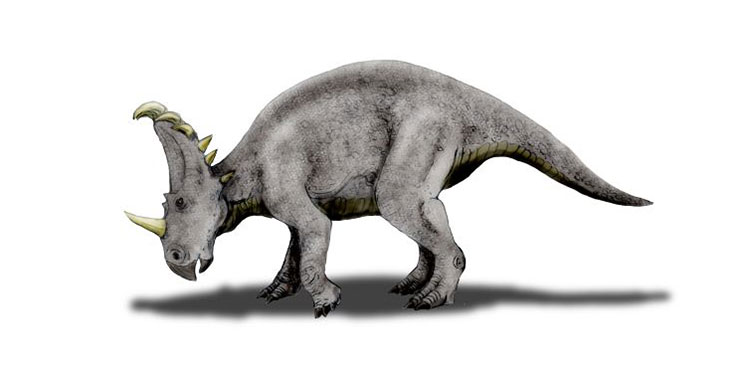
Sinoceratops, a relative of Triceratops from China, is a new dinosaur for Jurassic World: Fallen Kingdom. Whereas the dinosaur in the movie has holes in its frill, in real life they would have been covered in skin, as in this more accurate piece of palaeoart. Image © Nobu Tamura (spinops.blogspot.com) via Wikimedia Commons, licensed under CC BY-SA 3.0
As well as featuring more dinosaurs, Fallen Kingdom follows the trend of the previous movie by adding more individual characters among their ranks.
Blue the Velociraptor returns, as does (joyously) Roberta, the veteran T. rex from all the way back in Jurassic Park. She's fresh from her recent victory against the Indominus rex in Jurassic World, proving that what really counts is not how many teeth you have but how you use them.
This stands up to scientific scrutiny: calculated bite forces for Tyrannosaurus are the highest for any land animal on record. These crushing bites would be effective at subduing large or heavily armoured prey. By contrast, the thinner snout and teeth of Indominus suggest a weaker bite.
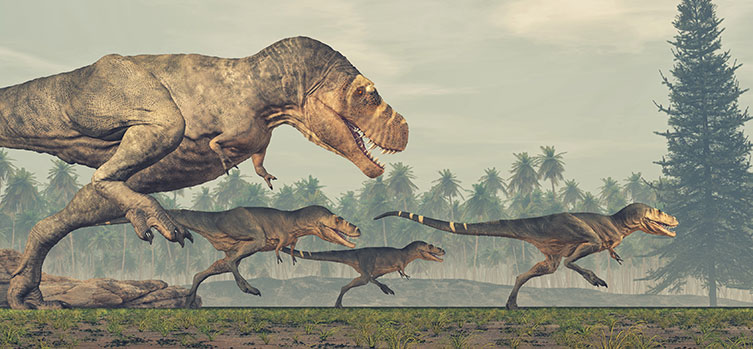
In Jurassic World: Fallen Kingdom, Roberta continues to defend her title as Queen of the Dinosaurs in the only way she knows how: one-on-one beatdowns against all contenders. Some researchers think that real tyrannosaurs instead may have hunted in groups, as shown here. © Orla/ Shutterstock.com
My favourite character, though (and I'm including the humans in this), is the newly-introduced 'Stiggy' the Pachycephalosaurus. A thick-headed (in all meanings of the phrase) ball of kinetic fury, Stiggy's modest rampage (featuring implausible property damage and somewhat less implausible personal damage) was my favourite sequence in the film.
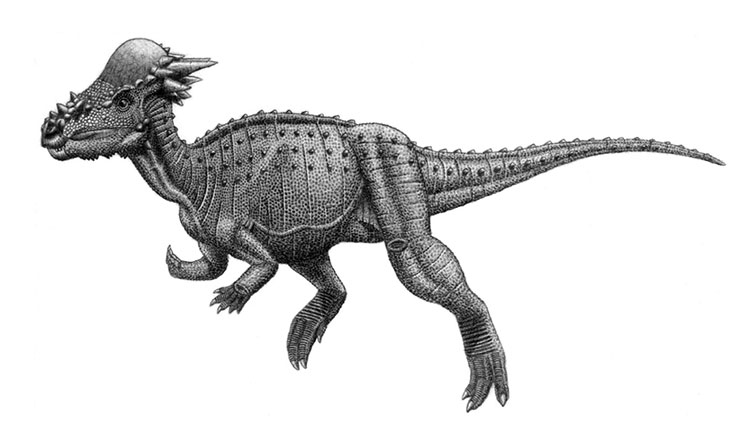
Merchandise for the movie identifies Stiggy as a Stygimoloch. However, recent research has shown that Stygimoloch was just actually a juvenile form of the more famous Pachycephalosaurus. That would mean that Stiggy is actually a teenaged Pachycephalosaurus - which may explain her bad temper! Who knows, maybe by Jurassic World 3 she will have matured into a fully grown Pachycephalosaurus, like the one in this piece of palaeoart. Image © Jordan Mallon (PaleoPortfolio) via Wikimedia Commons, licenced under CC BY-SA 2.5
Not just monsters
The greater emotional focus on the dinosaurs does sometimes approach cartoonish cliché (predators will compulsively hunt tiny humans even in the face of a natural disaster; Sinoceratops is essentially a huge dog; Dr Wu apparently made Indoraptor to have a dark sense of humour), or even sentimental mawkishness. However, it also fuels the film's most poignant scene, where a Brachiosaurus, the first dinosaur we met 25 years ago, wails in desperation when left to her volcanic fate.
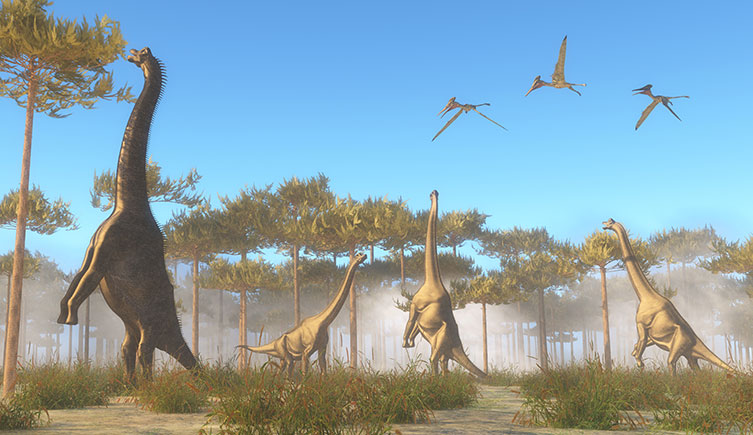
Brachiosaurus was one of the largest dinosaurs around, but even it was not safe from natural disasters. Its plight in the movie is a bit of a tear-jerker. © Catmando/ Shutterstock.com
Although it is unlikely that dinosaurs acted in some of these ways, this personification continues the work of previous Jurassic Park films in helping the audience to think of these creatures as real, sophisticated animals, looking only to survive, as opposed to unknowable monsters of some hellish primordial age.
Full movie monster duty is instead reserved for the genetically modified Indoraptor, which has been trained to respond to specific stimuli in an almost robotic fashion, further distinguishing this hybrid from the more organic behaviour of the other dinosaurs.
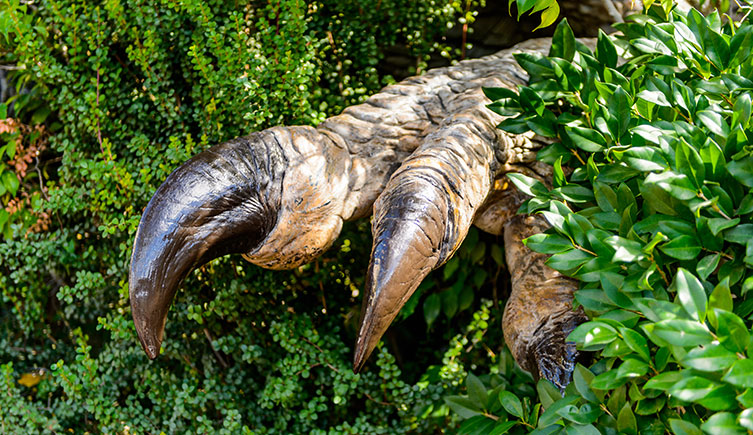
Jurassic World keeps its monster quota up thanks to Indominus rex (whose claws are shown here emerging through at bush at the Universal Studios Hollywood Park). In Fallen Kingdom scientists have created an even deadlier hybrid dinosaur, the Indoraptor. © Anton_Ivanov/ Shutterstock.com
Food for thought
The pathos in the film allows these ancient creatures to deliver a surprisingly contemporary message. One scene in particular - where the Jurassic predator Allosaurus finds herself on the auctioning block - will be highly topical to those who have been keeping an eye on the news.
The plot is driven by the tension between those who see the dinosaurs as individual creatures deserving of compassion versus monstrous abominations, laboratory specimens versus financial assets.
Issues of conservation and animal rights are relevant to our time, and the movie's conclusion (and sequel hook, naturally) hinges on a rewilding decision that may split audiences in two. And that is why we'll keep coming back to these movies: dinosaur fun with, perhaps, a little something for us all to remember.
David's top five dinosaur films
5. The Valley of Gwangi (1969). Stop-motion innovator Ray Harryhausen's best dinosaur movie introduces an Allosaurus (found in a lost valley of prehistoric animals) to a circus show, with dire consequences.
4. The Land Before Time (1988). The tale of an orphaned Brontosaurus and his dinosaur friends beats even Jurassic Park to the 'too many sequels for a dinosaur movie' award.
3. King Kong (the 1933 original). Ok, the star is a giant ape, but there are still some cracking dinosaur bits. It also very much laid down the foundation for the number one entry on my list.
2. Fantasia (1940 - the Rite of Spring segment, specifically). Although the dinosaurs are obviously dated now, the high production values of Disney's orchestral epic win through to yield scenes that have never left me since.
1. Jurassic Park (1993). Surely not a surprise. This is a classic story of the hubris of man, with extra dinosaurs. Those dinosaurs are not gratuitous either, but instead are appropriately used as metaphors for the capricious nature of power. This helps it transcend the conventions of its genre, placing it as one of my very favourite films.
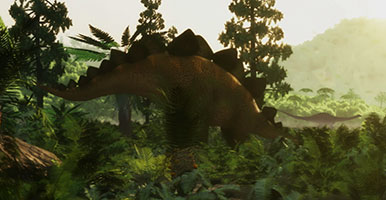
Discover dinosaurs
Find out what Museum scientists are revealing about how dinosaurs looked, lived and behaved.
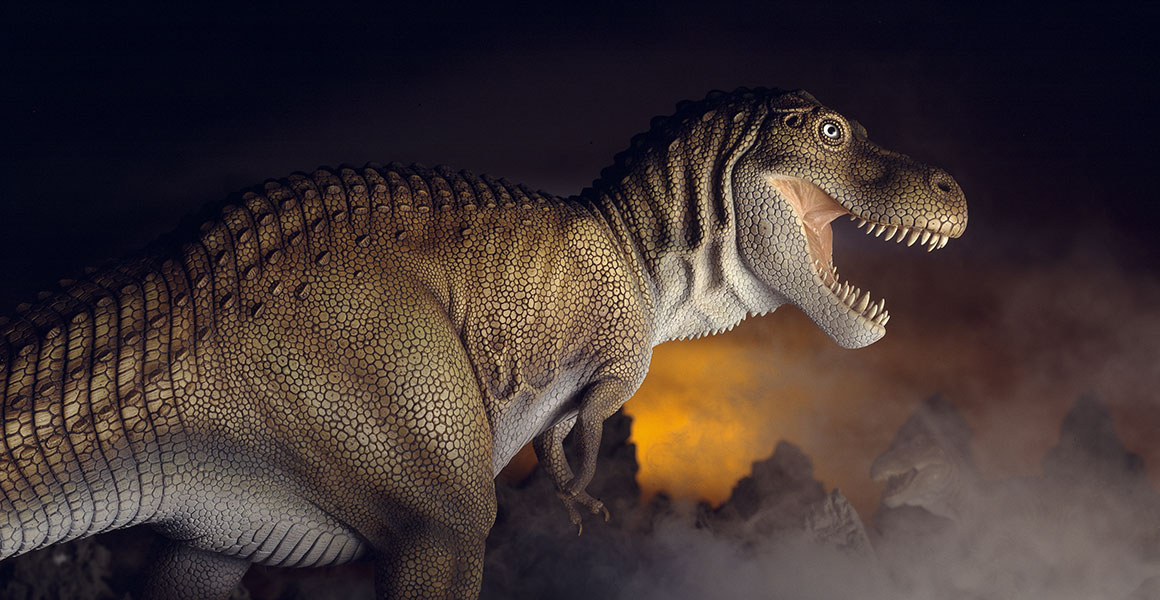


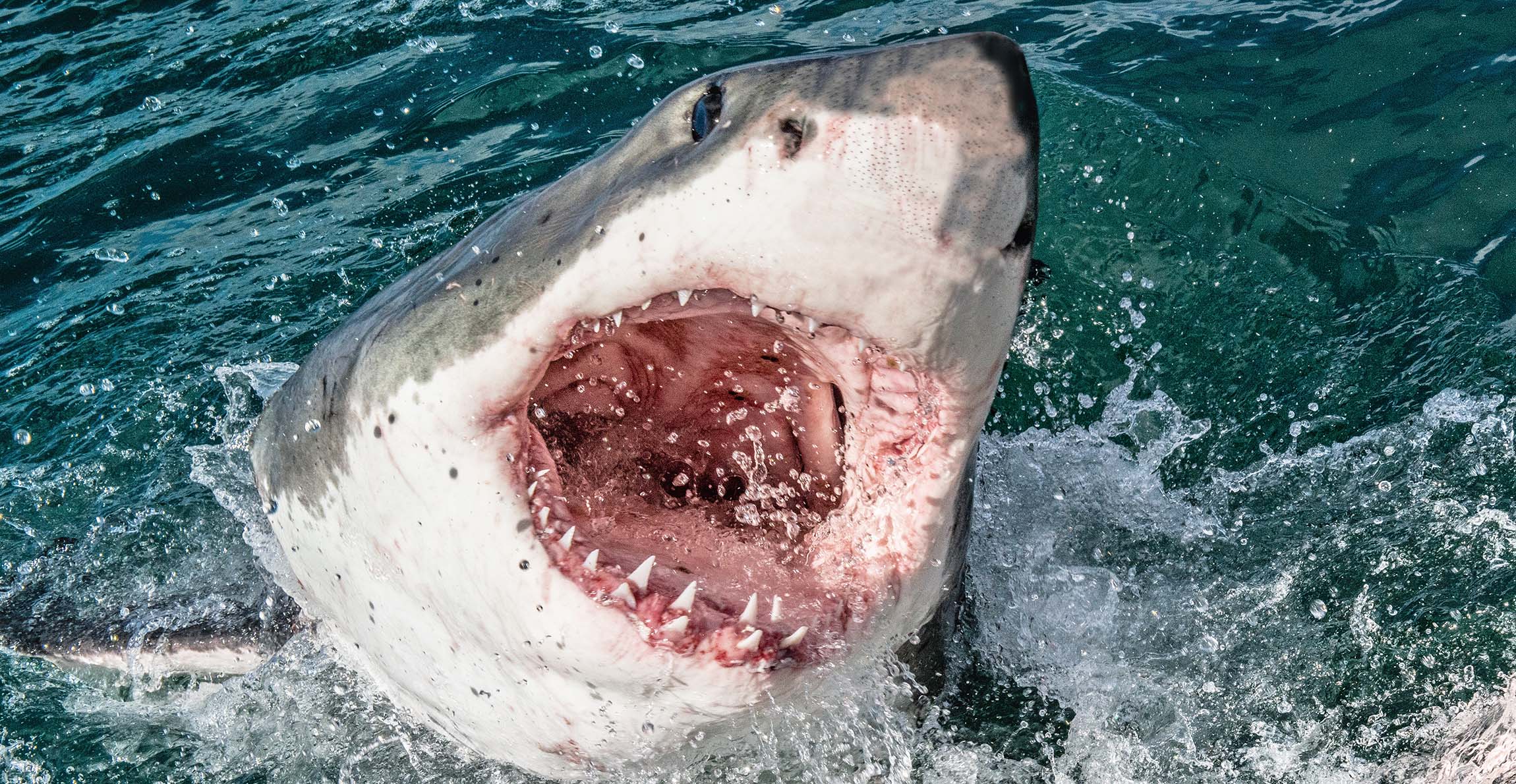
Don't miss a thing
Receive email updates about our news, science, exhibitions, events, products, services and fundraising activities. We may occasionally include third-party content from our corporate partners and other museums. We will not share your personal details with these third parties. You must be over the age of 13. Privacy notice.
Follow us on social media